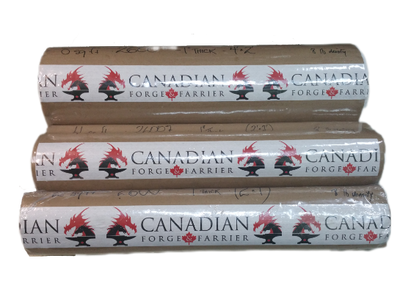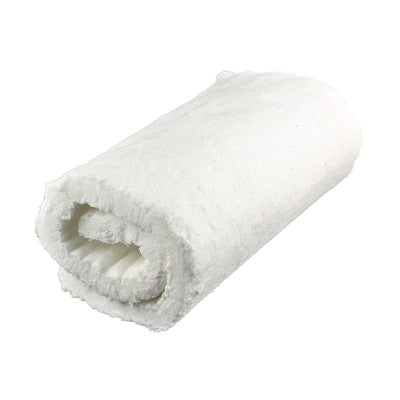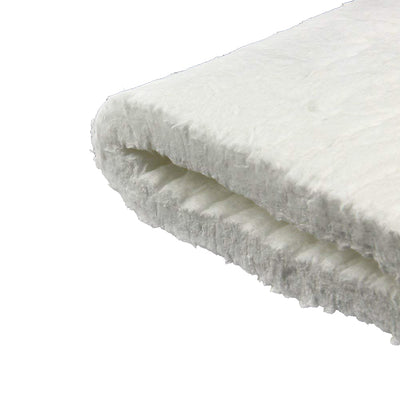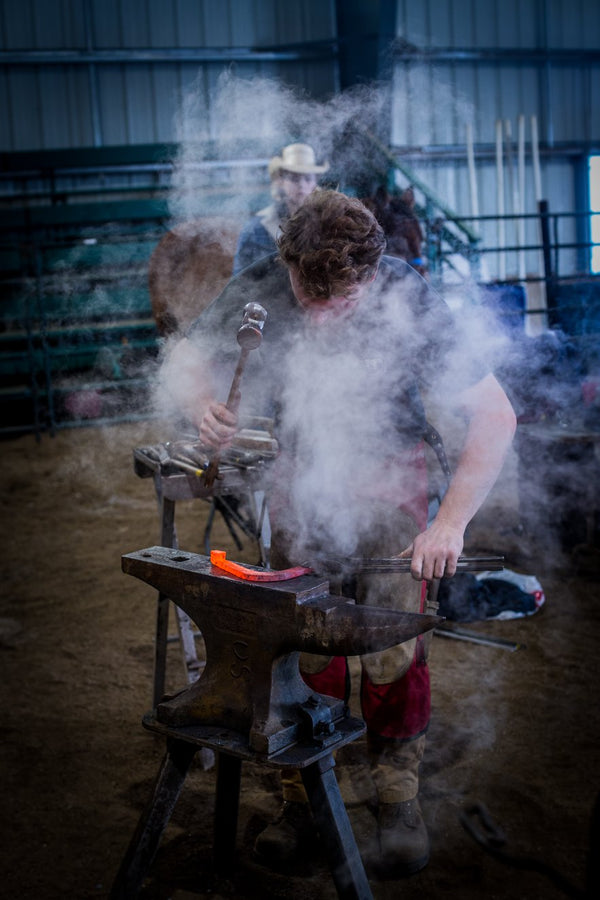The Good Stuff. 2600°F wool is rated for steady work at 2450°F.
Perfect specs for temperatures used forge welding steel.
PLEASE NOTE: All pre-cut lengths are sold in square feet. They are 2 feet wide (unless otherwise stated).
Did you know? Temperature Ratings posted are MAXIMUMS in Fahrenheit, and the operating temperatures are 150°F lower.
2600°F wool is an ultra-high heat blanket, though less common than med-high heat wool (22-2300°F), its what you want at steel FORGE WELDING HEAT - lasting longer, performs better, does not shrink nor become airborne (thus safer).
Wool rated at 22-2300°F will have an operating rating of 2050-2150°F, good for pizza ovens, fireplaces, and heat treating ovens, but not at forge welding heats.
Most forges sold commercially only use 2300°F refractories to save money but it starts breaking down at above 2150°F. Farriers & blacksmiths that do a lot of high temp work will often see shrinkage of this liner in their forges, allowing the fire to run behind the wool, causing liner pull-back or de-lamination, longer heat-up times and destructive steel oxidation.
Our refractory wool is made of spun ceramic fibers with low thermal conductivity, low heat storage, excellent thermal shock resistance, and high temp stability.
Utilized in forges, kilns, glass making ovens, fireplace lining, and knife tempering ovens. (see fiberfrax, kaowool, durablanket, inswool, insufrax, cerablanket, superwool)
Note: for Pizza ovens and around fireplace chimney's we have a supply of very cost-effective lower temperature rated 1900°F - 2200°F wool.
3 TIPS:
#1 Tip: Apply our Ceramic Refractory Paint (ITC -100) to your wool or brick.
Our ITC-100 greatly increases heat reflection, liner durability, flux resistance, and forge efficiency (by up to 40%). Stable up to 5000°F, it also has a health benefit by preventing wool fibre from becoming aerosolized. A little goes a long way, and our pricing is remarkable.
Metaphorically: ITC 100 does to a propane forge what a turbocharger does to a diesel motor - it's like free power and efficiency.
#2 Tip: Use wool rated @ 2600°F (no less!) if welding with your Propane Forge.
Propane atmospheric forges have a theoretical combustion temperature limit near 2400°F. 2600°F wool rated for continuous use at 2450°F ensures its thermal stability. This is important because wool heated above its rating becomes aerosolized, and is not healthy to breathe (think asbestos), measurably shrinking over time.
Note: Wool rated at 1800, 2200, or 2300°F will LOOK the same as our 2600°F wool and is less expensive to manufacture but have constant temp ratings 150-200°F lower, and I strongly recommend against its use at welding heats.
#3 Tip: 1" Wool + Rigidizer is our best-seller but we also stock 2" Wool
While most forges use a total thickness of 2" of wool, the majority of people double up with TWO layers of the 1" blanket in order to make fitting within tight spaces and around curves easier. It also allows you the option of replacing only the exposed 1" (half thickness) of the blanket.
Rigidizer sprayed onto the blanket and fired will stiffen up, making the step of applying an ITC Ceramic Refractory Paint top coat easier, and you are able to prevent compressing the wool during this process, important in maintaining optimal insulation value.
Click here for Inswool SDS & Inswool Technical Data Sheet.











